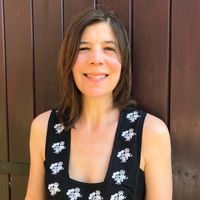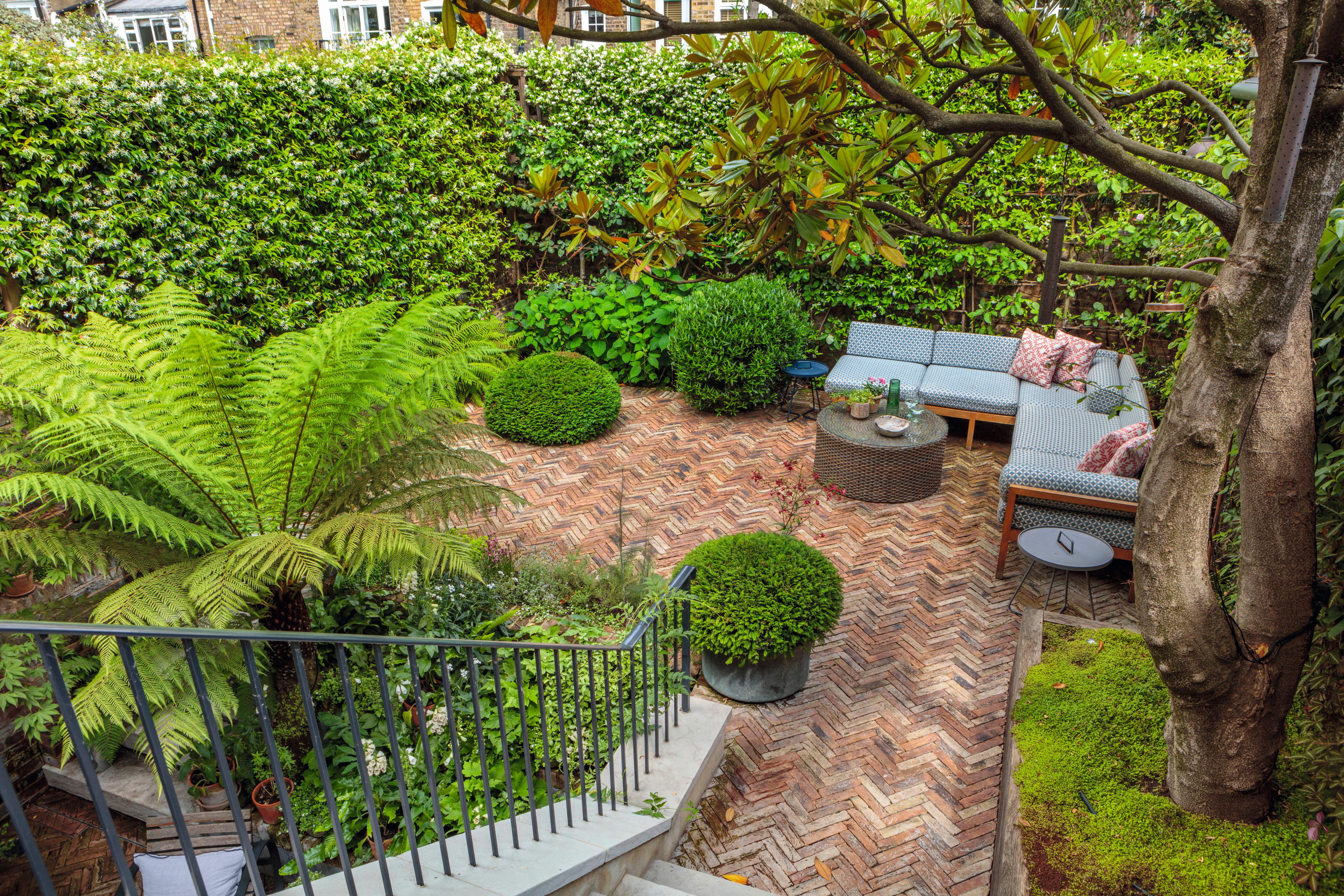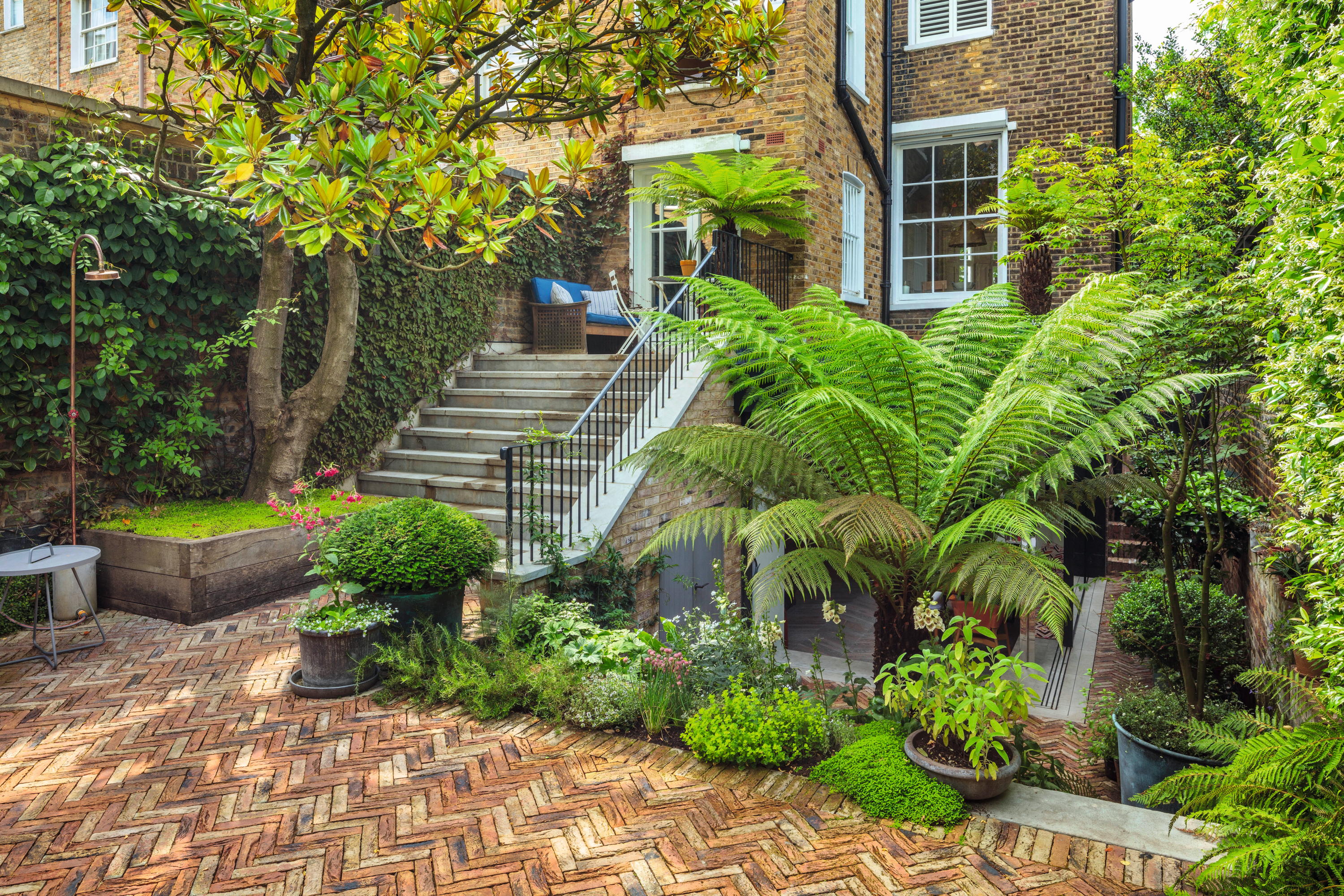How to make a gloomy city garden into a haven of colour and nature
Tiffany Daneff discovers how to transform a typically dark London back garden into a light-filled green haven that is always in use. Photographs by Clive Nichols.


When they first moved here, 21 years ago, the owners of this back garden — so typical of much of central London, with its dog-leg entrance from the street leading to a high-walled, roughly square yard — had young children, so they put off making any major improvements.
At that time, providing a patch of lawn for play was uppermost, as was the need for planting climbers and screening the back wall, which they did with pleached apple trees (Malus domestica ‘James Grieve’), to make it feel less urban. The garden already held a fine Magnolia grandiflora, which gave it character, as well as a little shade.
'All you could see were the steps from the street and a concrete wall... There was nothing, it had no character'
These initial improvements were made with help from designer Alasdair Cameron of Cameron, who continued to provide bursts of colour with seasonally updated containers. At the front of the house, he livened up the Victorian terrace with over-sized planters filled with a changing succession of towering wildflowers and airy grasses that had passers-by stopping to admire.
Seven years ago, with the children grown up, the time seemed right finally to create ‘a proper garden, something that didn’t need seasonal replanting, but contained perennials and had longevity’.
The real bugbear during the previous years had been that the kitchen sat below the level of the garden. ‘From the kitchen conservatory, all you could see were the steps from the street and a concrete wall. You couldn’t see the garden, there was nothing, it had no character,’ recalls the owner today. A new proposal, worked up in tandem with a team of architects, entailed lowering the levels of both kitchen and garden. The London-brick exterior walls of the kitchen were replaced with contemporary glass doors that would slide open on both sides of the outer corner of the house, allowing the kitchen to become a part of the garden and vice versa.

The magnolia helps shade the sofas; the pavers are washed to keep the colours.
The result has been a triumph and created a much lighter and greener garden. The glass cube completely avoids that sense of being in a dark well that will be familiar to so many London residents. The width and generosity of the stone steps, replacing a small metal staircase, that now lead from the small terraced area outside the French windows on the first-floor sitting room down to the garden give an illusion of width and space.
The Magnolia grandiflora, which marks the height of the old lawn, has been boxed in to keep it at its original level and is recovering from the earthworks beneath the steps. The hero of the new design, however, is the herringbone paving, which picks up from the grey herringbone wood floor in the new kitchen and gives a nice, informal feel.
Exquisite houses, the beauty of Nature, and how to get the most from your life, straight to your inbox.
‘We didn’t want concrete,’ say the owners, ‘as it would have felt much more sparse.’ The brick pavers are new, but are produced in a variety of colours, shades and textures, so they look as if they have been reclaimed. Each paver was painstakingly laid by hand and they are regularly cleaned with a pressure hose to keep them from becoming dark. The steps from the street are laid in a matching brick rather than in the lighter stone used for the other steps, so as not to draw attention to them and away from the garden, which now looks lush and elegant.

Fresh green foliage in a range of colours and textures is key to the design.
Opposite the kitchen is a small raised bed for herbs, many good for decorating drinks (mint, lemon verbena, thyme), and pots of ferns and flowers, mostly white-flowering varieties of cyclamen, bacopa and hesperis, with Solomon’s seal to help brighten the garden. Larger containers house tree ferns, Dicksonia antarctica, the largest of which is about 30 years old. Originally a small plant, perhaps 18in high, it has flourished in its current spot. Two more tree ferns, one on top of the glass cube, provide balance.
Outside the kitchen is a Japanese maple, which has lovely autumn foliage, and a young fig, the attractive palmate leaves of which are lit up at night. Lights are sensitively placed, giving soft uplighting in the pots and to the magnolia. As the garden is in full sun from 11am to 6pm, a wall-mounted shade was essential. (In summer, it can be so hot that an outside shower is in regular use.)
The sun shade often stays open over the corner sofa, giving a sense of being in a room that is particularly soothing when having evening drinks. An industrial wall light adds to the rural-courtyard atmosphere.
The garden now seems part of the house. ‘You can see everything changing with the seasons and it feels like an oasis. It is a garden that we will keep playing with and adding to.’
Previously the Editor of GardenLife, Tiffany has also written and ghostwritten several books. She launched The Telegraph gardening section and was editor of IntoGardens magazine. She has chaired talks and in conversations with leading garden designers. She gardens in a wind-swept frost pocket in Northamptonshire and is learning not to mind — too much — about sharing her plot with the resident rabbits and moles.
